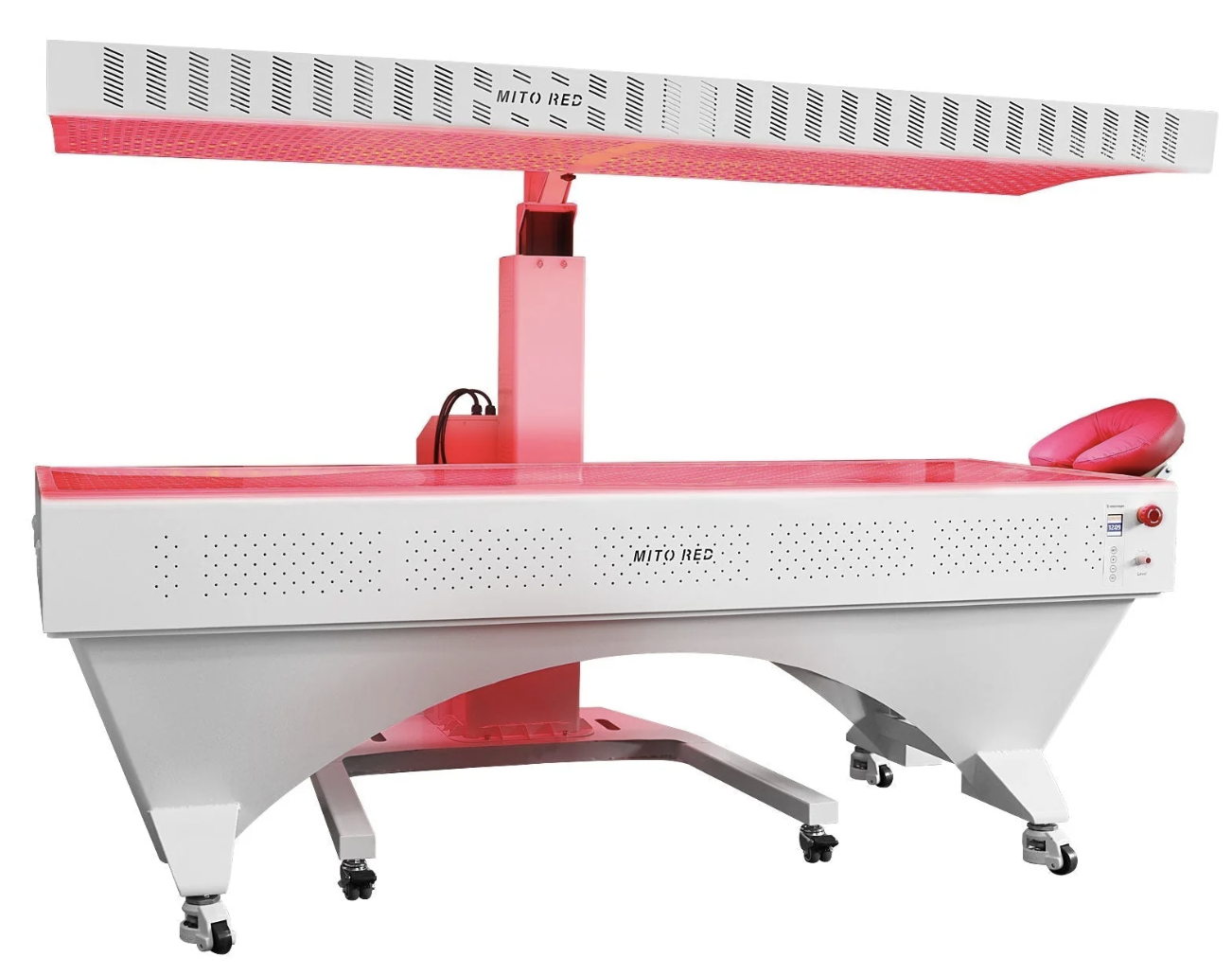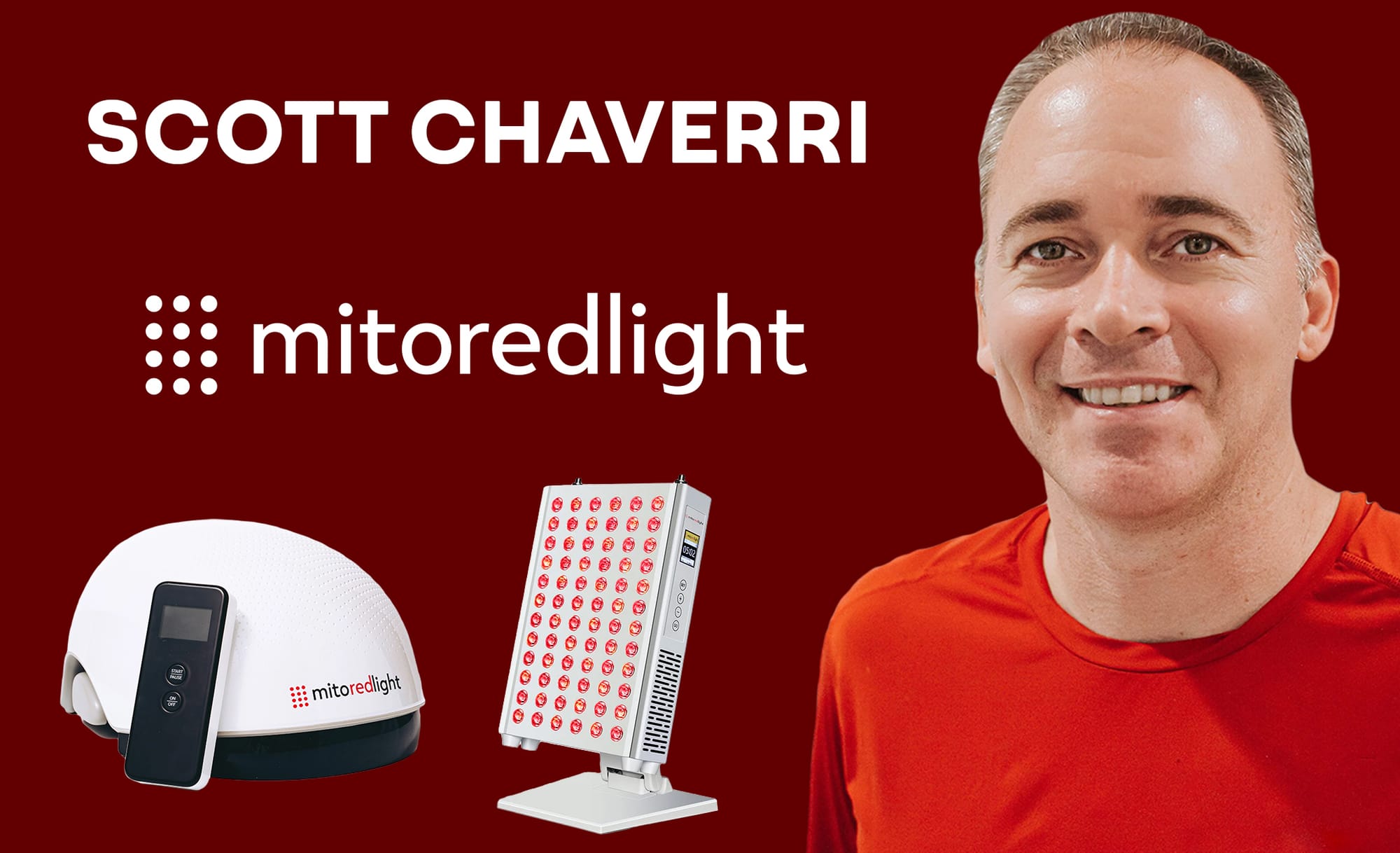Recently, I had the pleasure of interviewing Scott Chaverri, the founder and CEO of Mito Red Light (if you buy from them code ALEX5 saves). During our conversation, he shared how got into the red light therapy world, the protocol he follows, his insights on the industry's future, and even discussed the device he'd pick if stranded on a desert island.
I found our discussion very honest, enlightening and informative, and I am sure you'll also feel the same while reading it.
What was your first experience with RLT?
Scott Chaverri: I just turned 40, when I'd heard that it might be beneficial for testosterone so I figured I would buy a full body panel. I used it for a good six to nine months on and off. I didn't personally notice any difference with testosterone, but I was sleeping a lot better from using it, which was an unexpected side benefit - as opposed to side effect. So I just wanted more of it and went down the rabbit hole of seeing how I could get more panels. That actually drove me to start the company, because I thought most of the options out there were too expensive.
What is your own personal RLT routine?
Scott: I do five days on, two days off. Usually I do it at the end of the day, right before I go home. In the office we have a Mito Red Light Bed, but I rotate my sessions and nowadays use a Mito Adapt Ultimate and a Mito Adapt Elite in combination on stands. I stand between these two giant devices and do head-to-toe therapy from eight to twelve minutes.

The Mito Adapt is fun and I do play with the 11 modes. Philosophically, if you change things up a bit, it impacts the body differently. Same with the wavelengths, they all have a slightly different impact on us.
What advice would you give to a RLT newcomer?
Scott: You should think about buying an RLT device as an investment into your well-being. Even just sleeping better can reverberate in your life in so many positive ways, as it contributes to having more energy during the day or making better decisions because you're better rested. We have a good track record and we've been in business for over five years now. Besides,
And we've got the electrical safety certifications, the ISO quality standard certifications and we're in process to get the IEC 60601 certification which is an even higher standard one for medical devices. So people can feel comfortable, since even some of our lower cost products meet the highest electrical safety standards and medical device requirements.
Where do you see the RLT market in 5 years time?
Scott: We are witnessing a rise in personalized solutions within the health and wellness sector, with the emergence of wearables and affordable data-tracking devices. I expect that tests, like vitamin D tests etc, will become even less expensive and more accessible, enabling individuals to monitor their health more regularly.

This shift towards personalization extends to the red light therapy industry as well. Our patent-pending device, the MitoAdapt, represents this movement. It focuses on decentralized data experiments, exploring various light wavelengths and modes. Users test these options in real-life situations, providing valuable feedback that may help us develop specific protocols tailored to different applications.
If you had a magic wand that could solve or improve one issue with RLT at the moment, what would it be?
Scott: My answer relates to the previous one. So, I'd say we would already have personalized, data-driven recommendations for each and every individual. And this would solve so many issues at once.
What is one misconception about RLT that you wish was addressed?
Scott: There's a misconception that if something is good, more of it must be better, but that's not the case here. We're seeking the right balance, often referred to as the "Goldilocks zone."
Using red and infrared light for about 10 or 15 minutes a day is beneficial, but excessive use, such as one or two hours a day, is not recommended.
What exciting things is your company working on that you can share with the readers?
Scott: We've developed a scalp serum meant to revitalize hair follicles, a skin serum in production, and a chiropractic product line based on studies from orthodontics.
These studies demonstrated that using red and near-infrared light on teeth with braces resulted in faster and better movement, suggesting potential benefits for spinal issues. Given the common problem of people hunching over keyboards and screens all day, incorporating red and near-infrared light into products might be beneficial.
We're currently working on unique products, including groundbreaking red light beds that are more affordable and lighter than existing options. This is something I'm particularly excited about.

Oh, and besides we're developing a blanket for horses that I'm incredibly enthusiastic about, too. The existing options for horses are extremely pricey; for instance, I've come across a red light blanket with a thousand LEDs selling for fifteen thousand dollars. Our goal is to create a much more affordable and effective solution.
You're stuck on an island for a year (with electricity) - and can only have one RLT device - what would you have and why?
Scott: I would probably have the bed, because I do enjoy laying down during a red light session. Two two big “Ultimate” body panels would also be great for optimizing for time since you're able to do front and back simultaneously.
What are your favorite scientific studies on the benefits of light therapy?
Scott: There's a study dating back around 10 years, focusing on elite Chinese female basketball players. In this study, they used full-body red light exposure, which was leading to significantly improved subjective sleep scores.
So, that's objective evidence that supports the idea that red light indeed enhances melatonin production, potentially explaining why people report better sleep after using it.
What's your favorite customer testimonial?
Scott: We've received numerous testimonials from our customers, many of which have been unexpectedly profound and humbling. I can share that one common feedback we often receive is improved sleep quality.
As we discussed already, better sleep is crucial, given its compounding benefits in people's lives. Even if that was the only benefit, it would be so valuable, especially in today's world with constant distractions and mental health challenges like anxiety and depression.
While using the red light panels we have the opportunity for meditation, breathing exercises, or simply for a moment of calm, and for the realization that we have 10 minutes per day for ourselves.
Products Mentioned In This Post
☑️ The ones Scott uses for his sessions: Mito Adapt Elite and Mito Adapt Ultimate - a discount code is generated after you click that link!
☑️ The one Scott would take to a deserted island: Mito Red Light Bed
☑️ The one Scott uses for hair growth: Mito Red Light Professional Laser Helmet
❓Would you start with Red Light Therapy, but don't know which device is right for you❓









